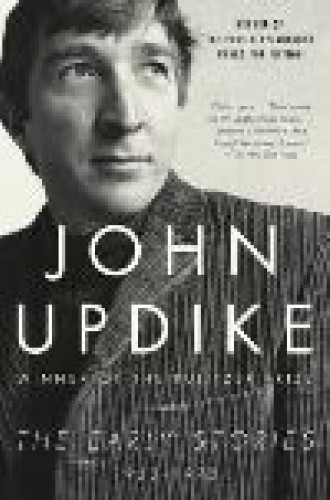Saying the unsayable
Exploring the extraordinary ordinary dimensions of our lives has always been John Updike’s métier, in which he is peerless among American mid-20th-century writers. His writings, perhaps his short stories most powerfully, relentlessly expose a predictable dialectic: “Discontent, conflict, waste, sorrow, fear—these are the worthy dynamic subjects. Yet our hearts expect happiness, as an underlying norm, and its absence seems news worth delivering.” The 103 stories collected here offer an astute exploration of the significance of literary art, a transparent domestic chronicle of two American decades, and a silhouette of Updike’s personal life.
Though Updike’s critical work has been consistently ignored by academic critics, he has devoted a great deal of first-rate intellectual effort to exploring the nature of literary art, as well as art theory generally, both in his fiction and nonfiction. This interest is powerfully rendered in several of the stories, especially “The Sea’s Green Sameness” (1960) and “Leaves” (1962), in which a young writer struggles to account for the significant role of art in relation to nature. He fears that after Proust and Joyce there is nothing more to tell because it has become clear that the two worlds cannot be reconciled. “Perhaps all of us latter-day writers are like the priests that the peasantry continued to supply to the church long after the elite acknowledged that the jig was up,” the narrator reflects. But then he concludes, “surprisingly, I do have something to contribute to human knowledge of the sea. . . . A revelation. . . . I hear in the sigh of its surf encouragement from the other side of the apparent wall—sullen muffled encouragement for me to repeat the attempt, to rush forward in my mind again and again.”
The dilemma of the Updikean artist is that he finds a hint of revealed meaning in and beyond nature, but “What is it? . . . What is it? If I knew I could say.” Art tries to say the unsayable thing. Reality eludes but requires the artful word, which it will not permanently verify. This theme of frustrated but necessary artful naming saturates these stories.
Updike also here explores the transformation of America’s sensibilities. He writes, “We were repressed enough to be delighted by the relaxation of the old sexual morality. . . . We were simple and hopeful enough to launch idealistic careers and early marriages, and pragmatic enough to adjust, with an American shrug, to the ebb of the old certainties. . . . Yet we continued prey to what Freud called ‘normal human unhappiness.’” These poignant stories present a veritable pageant of the changing cultural scene over more than 20 years, with its ebbing moral certainties and daily erosions of happiness.
Updike has made it clear that there is always some distance between his fiction and his personal life, but he has also noted that a writer’s effectiveness depends on the transformation of firsthand experience. Though he has consistently deflected biographical assaults on his life, perhaps no other writer of his generation, both in fiction and in interviews, has so regularly provided biographical detail—about his parents, school days, marriage, infidelity, divorce and remarriage, young children, extended family, Christian commitment and lifelong association with churches of several denominations, psychological terrors and complexes and, especially since the 1990s, physical aging.
This is a collection, Updike tells us in the foreword, not a selection. “A selection, surely,” he says, “is best left to others when the author is no longer alive to obstruct the process.” But a selection might have been better. Some of the stories do not come up to the quality of the majority. And there are too many stories of infidelity and guilt that revolve and resolve too similarly. Still, this hefty book leaves one with a deep sense of gratitude for the young writer who stayed the course he anounced at age 35 in a 1966 Life magazine interview, “It seems to me that critics get increasingly querulous and impatient for madder music and stronger wine, when what we really need is a greater respect for reality, its secrecy, its music. Too many people are studying maps and not enough are visiting places.” Updike’s stories are exquisitely wonderful places to visit.





